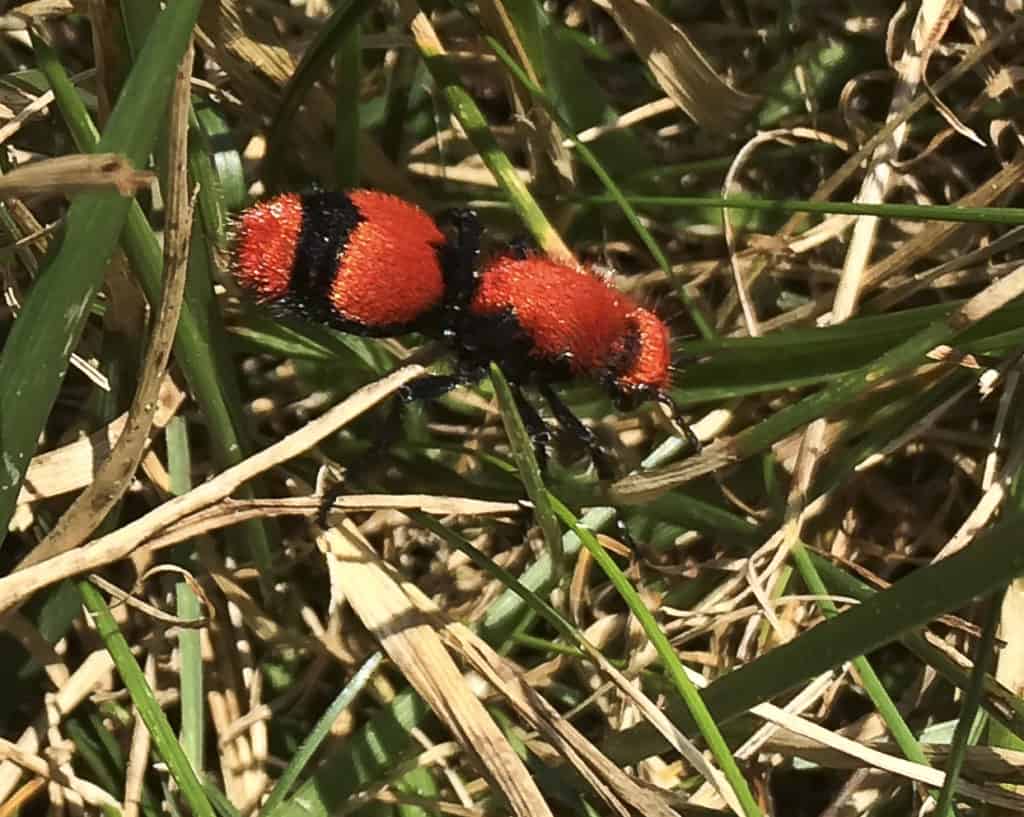Creature Feature

An ‘Ant’ to Avoid
By Wayne Bierbaum
While taking a brief walk on the lawn at work, I noticed a fast-moving fussy red insect like an ant. I got my camera and tried to take a clear photo but it wouldn’t hold still. I knew it would not be wise to catch it. I chased it around and got a semi-blurred photo.
Although it looked like an ant, it was actually a type of wasp called a velvet ant. With the reputed severity of their sting, they are also known as cow killers.
This wingless wasp is the female of the species. They are sexually dimorphic, meaning the females and males are significantly different beyond the reproductive organs; the males have black wings. These wasps are a parasitic species. The females actively search for ground-nesting wasps or bees in order to lay their eggs on the young. The velvet ant egg will hatch and then prey on the other embryo by living off it as the victim grows.
Velvet ants are unusual to begin with but they also are one of the few wasps that make more than a buzzing noise. They will make a strong squeak when startled or mad. There are examples of the sound on YouTube. It sounds a little like the chirping hummingbirds make while fighting.
Velvet ants are fairly uncommon. If they were common then other pollinators would be threatened, but now their impact is very low. Both sexes feed on flower nectar.
The sting from some of the species is really quite painful, a cow-killer, and there are distressing videos showing people purposefully getting stung. Yet some species are said to have a sting not much worse than a honey bee. Even so, children should be taught not to play with anything that looks like a large fuzzy ant.
